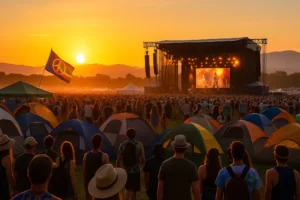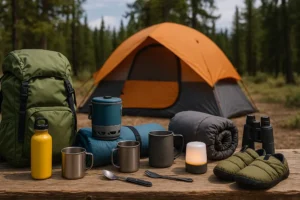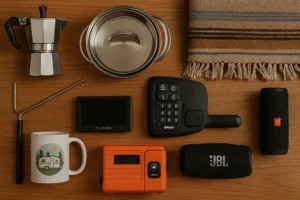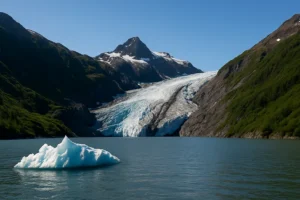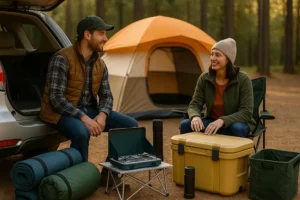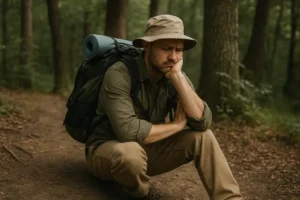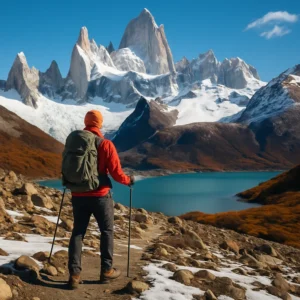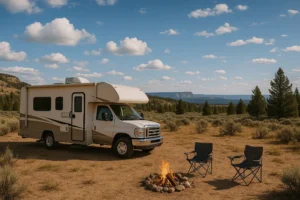I still remember the first time I tried renting camp gear for beginners. I was fresh out of college, living in a one-bedroom apartment with barely enough closet space for my clothes, let alone a tent, sleeping bag, and cookware. A group of friends invited me on a weekend trip to Yosemite. I had zero gear. Buying everything would’ve cost me hundreds of dollars, money I didn’t have at the time. So, I turned to a rental service. That decision changed the way I think about camping forever.
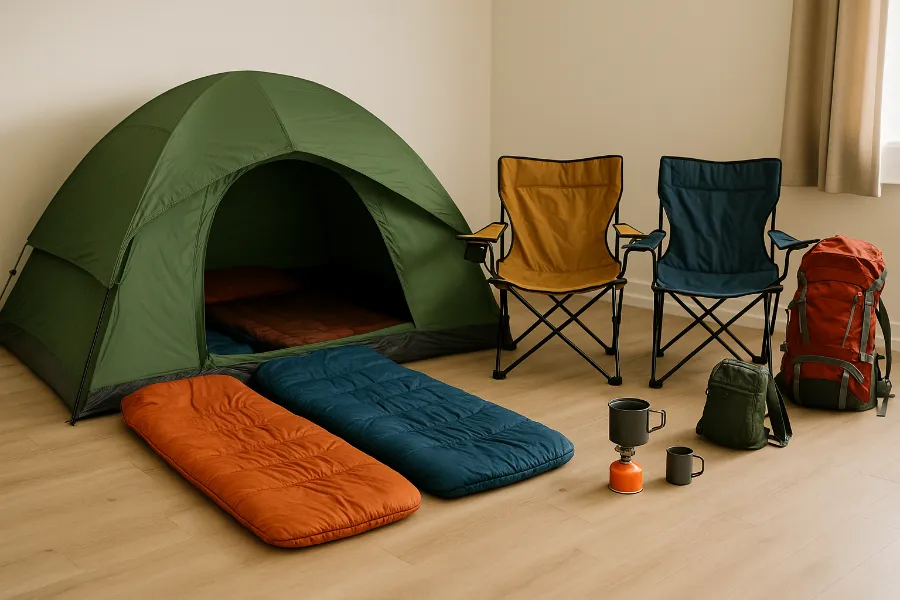
Renting camp gear isn’t just for beginners. It’s for anyone who wants to get outside without the burden of hauling, storing, or maintaining a garage full of equipment. Over the years, I’ve learned when it makes sense to rent, what’s always worth owning, and how to make the most of your rental experience. Here’s everything I wish I’d known earlier, from my own stories to trail-tested advice.
Why Renting Camp Gear Makes Sense
There’s a lot of hype around owning the perfect ultralight tent or top-tier sleeping bag, but let’s be honest—gear gets expensive. Renting camp gear is the smart way to dip your toes into the outdoors without maxing out your credit card.
When I first started, the cost savings were huge. Instead of dropping $300 on a tent and $200 on a sleeping bag, I rented both for under $70. That freed me up to focus on the experience, not the receipts.
Beyond money, renting gives you flexibility. Want to try a kayak this trip and snowshoes next winter? Rent. Curious if you’re more of a hammock camper than a tent sleeper? Rent. It’s a low-commitment way to figure out your style.
And if you live in a small apartment or travel a lot, the storage problem is real. Lugging gear through airports is miserable. On one trip to Colorado, I had gear shipped ahead of me through Arrive Outdoors camping gear rental review style services, and it was waiting at my hotel when I landed. No baggage claim wrestling, no TSA awkwardness. That convenience alone is worth the rental fee.
The Downsides of Renting Camp Gear (And How to Avoid Them)
Of course, renting isn’t perfect. Over time, I noticed a few pitfalls.
First, the costs can creep up if you camp often. Rent ten times and you’ve probably spent more than if you just bought the essentials. That’s why I tell people: rent first, but once you fall in love with camping, start buying your go-to items.
Second, rental gear isn’t always pristine. I once got a backpack that smelled like it had been through three festivals and a rainstorm. Not great. My tip? Always inspect your gear before leaving the shop or opening the rental box. If something feels off, ask for a replacement.
Availability is another issue. Try renting gear during peak summer weekends near a national park, and you might be stuck with slim pickings. To avoid that, reserve early or choose services like Arrive Outdoors that let you book and ship ahead.
Finally, rental gear can lack personalization. A sleeping bag that’s “good enough” for most people might leave you freezing at night if you run cold. That’s why I eventually invested in my own.
Best Camping Gear to Rent vs Buy
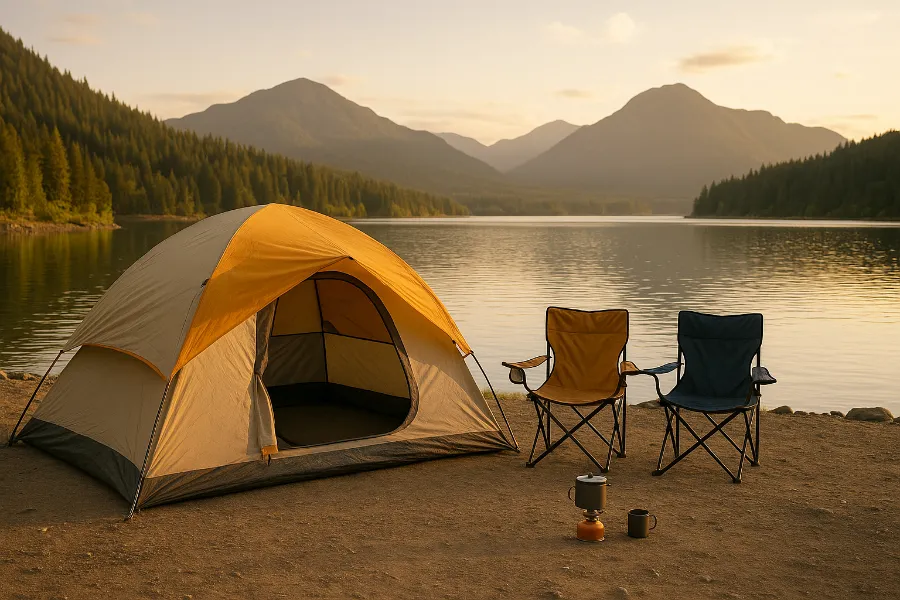
Over the years, I’ve figured out a balance: some things are perfect to rent, others I’d never leave to chance.
Best Items to Rent
- Camp chairs: Comfort is subjective—try different styles before investing.
- Specialty equipment: Kayaks, paddle boards, snowshoes, climbing gear. Great to test without a big upfront purchase.
- Bikes: Unless you’re a hardcore rider, renting for trails or sand makes more sense.
- Bear cans: Often required in the backcountry, but not worth owning unless you’re backpacking often.
- Backpacks: Try on different fits before buying your forever pack.
Best Items to Buy
- Tent: This is your home outdoors. Owning one means reliability and familiarity.
- Sleeping bag: Warmth and comfort are too personal to leave to chance.
- Sleeping pad: Trust me, your back will thank you.
- Cooking equipment: A lightweight stove and cookware set are worth having.
- Water filter: Affordable and life-saving. Start small with something like a LifeStraw.
- Footwear: Blisters ruin trips. Buy shoes that fit you, not someone else’s rentals.
- Headlamp: My most-used piece of gear—essential for camping and emergencies.
This is also my answer to anyone asking what camping gear should I buy first: a reliable tent, sleeping bag, and sleeping pad. These three make or break your comfort.
Insider Tips From the Trail
Here’s the advice I wish someone had drilled into me before my first trip:
- Test everything before you go. Don’t wait until nightfall in the woods to figure out how to set up a tent you’ve never touched.
- Prioritize the hip belt on a backpack. A good fit saves your shoulders on long hikes.
- Rent near your destination if you’re flying. If you’re searching for where to rent camping gear near me, check both national chains and local outfitters.
- Don’t overpack just because you rented. Gear still adds weight—be selective.
- Talk to locals about the best shops. Rental quality varies, and locals know who maintains their gear properly.
Tips for Renting Camping Equipment for a Trip
Here’s a simple checklist I use every time:
- Reserve gear early, especially in peak season.
- Inspect everything before leaving the shop or hotel.
- Always ask if the gear has been cleaned and maintained.
- Double-check return policies (late fees sneak up fast).
- Pack responsibly—you break it, you buy it.
Following these tips for renting camping equipment for a trip has saved me from headaches more times than I can count.
Where to Rent Camping Gear
If you’re new to this, here are a few places I’ve used or seen friends rave about:
- REI Rentals: Reliable, nationwide, solid packages.
- Arrive Outdoors: My go-to when I want gear shipped to a hotel or even a FedEx location. They stock high-quality brands like Marmot and Nemo.
- RightOnTrek: Cool locker system near national parks. No reservation needed.
- Outdoors Geek: Great for glamping setups or family camping.
- Local outfitters: Sometimes the best-kept secret, especially near popular parks.
If you’re planning a big adventure, especially renting camp gear for national park trips, I’d recommend booking well in advance—these services get snapped up quickly.
My First Time Renting Camp Gear: Lessons Learned
That Yosemite trip taught me a lot. My rented tent was heavier than I expected, the sleeping bag was a little drafty, and the camp stove took me longer to figure out than I care to admit. But I also learned the value of trying gear before buying. By the end of that weekend, I knew exactly what I wanted to invest in.
Later, when I discovered services like Arrive Outdoors, it leveled up my game. No more mismatched gear or questionable quality—I could select exactly what I wanted, get it shipped ahead, and trust it had been cleaned and maintained. For me, that was a huge step up from the old “hope the local shop has something left” days.
Final Thoughts: My Rule of Thumb
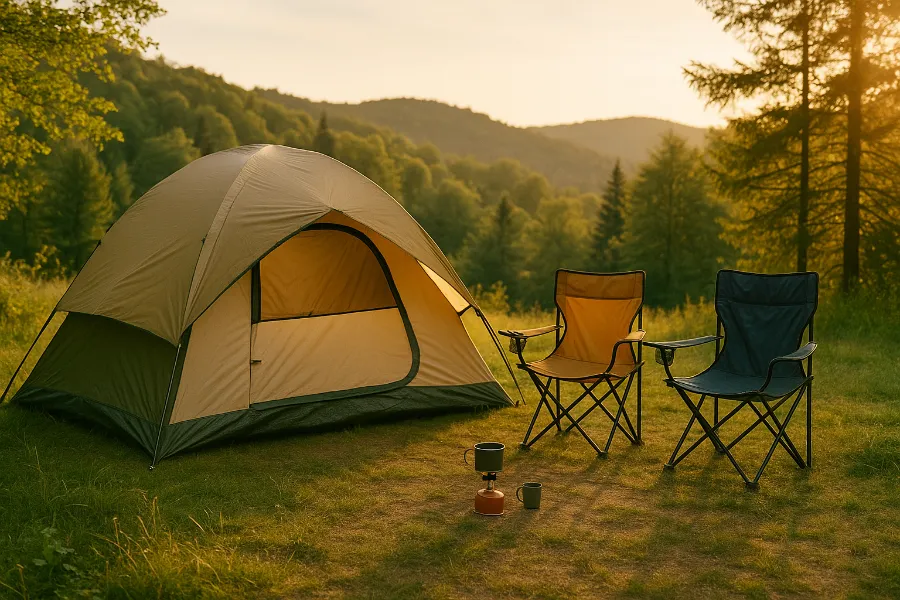
Here’s how I break it down:
- Rent when you’re trying something new, traveling far, or camping once in a while.
- Buy when comfort, safety, and reliability are at stake.
Renting camp gear doesn’t mean you’re “less of a camper.” It means you’re smart about your time, money, and space. For me, a mix of owning the essentials and renting the rest is the sweet spot.
So, if you’re thinking about your first trip—or your tenth—consider what makes sense for you. Start small, rent what you can, and when you’re ready, invest in the gear that will make you fall in love with the outdoors all over again.

